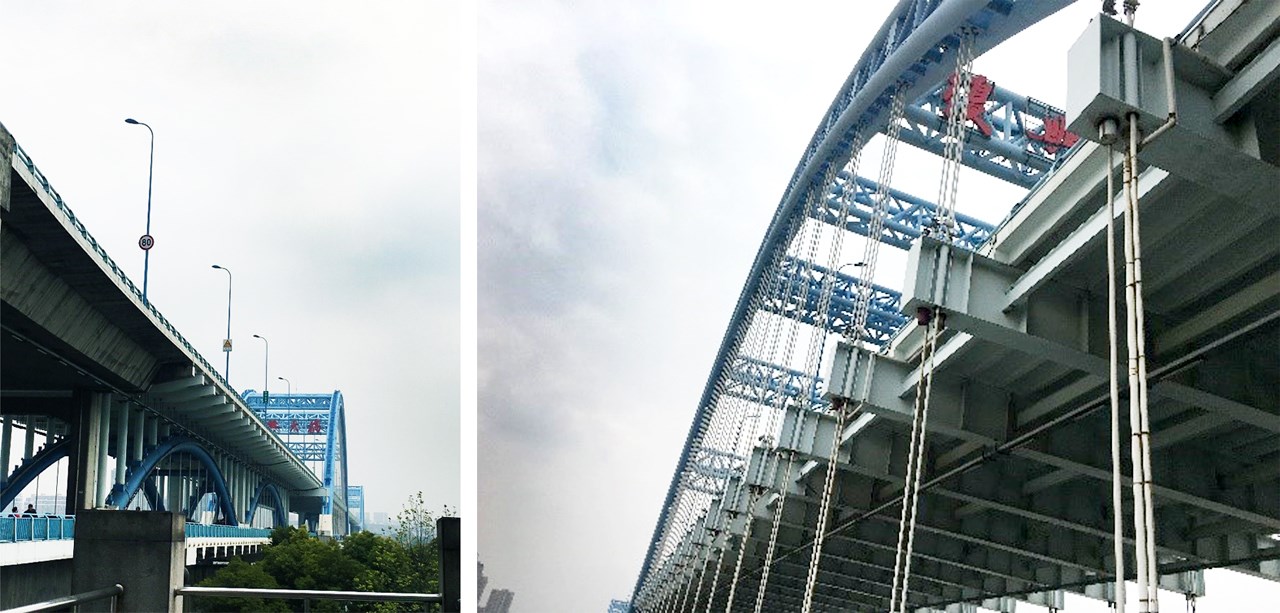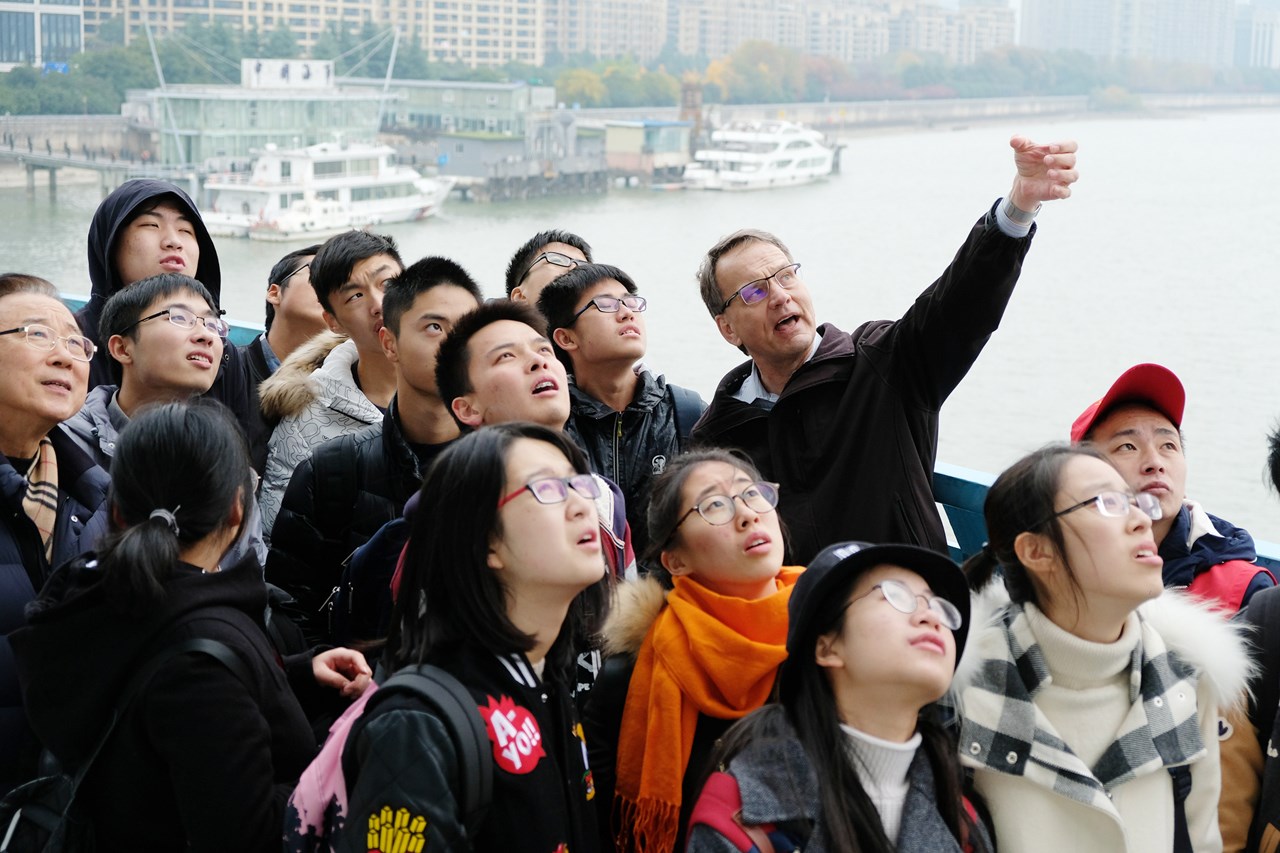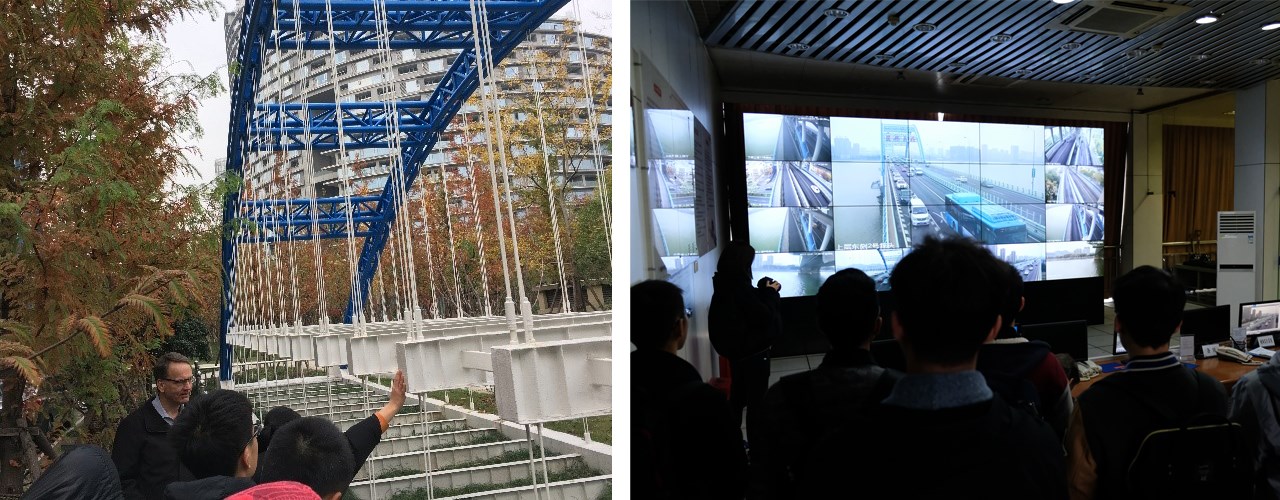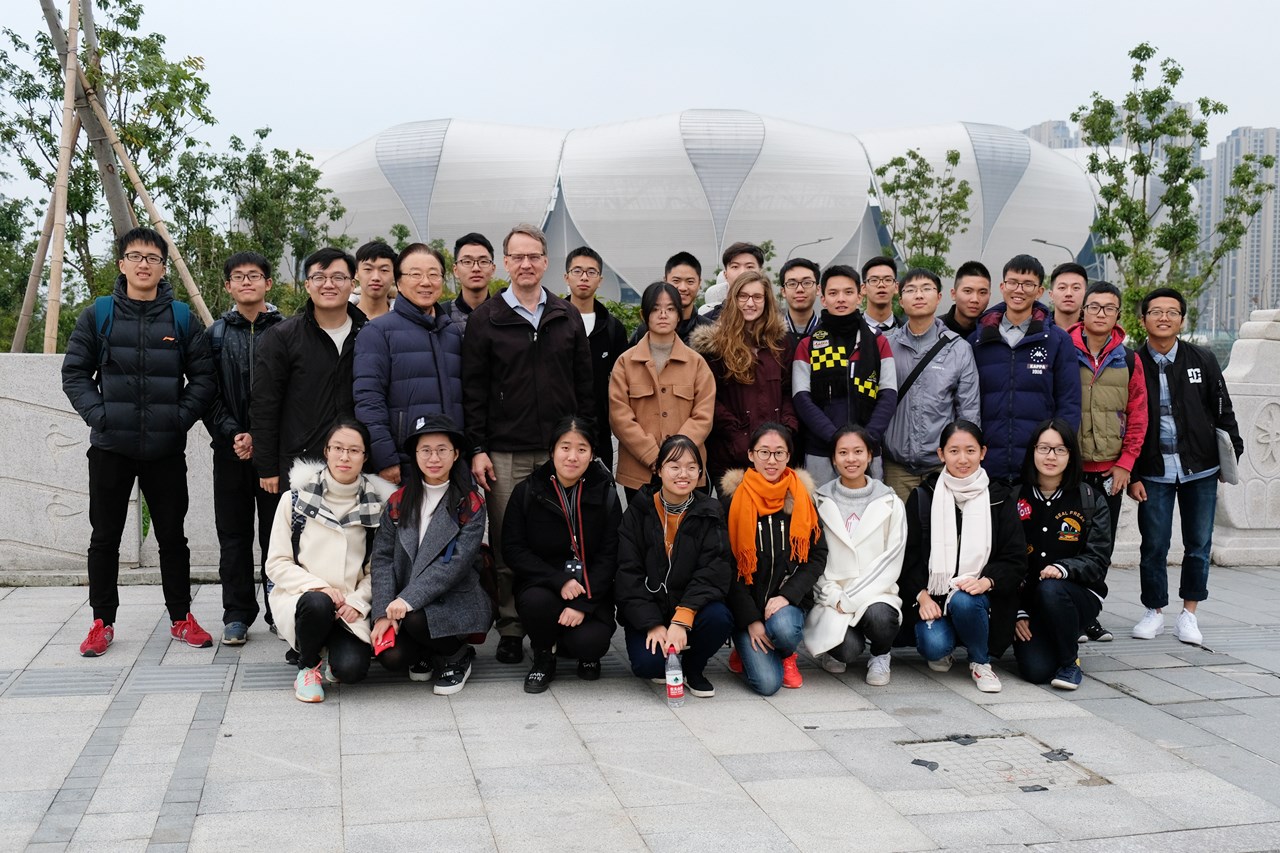On December 1, 2017, the department of Civil Engineering of ZJUI Institute had on a new field trip. The site of this field trip was Hangzhou Qianjiang Fuxing Bridge.

At 12:30, we arrived at the school gate on time and set off for Hangzhou. We were all looking forward to studying the Fuxing Bridge the whole way there. This time, the field trip’s purpose was to examine the structure and load path of the bridge, which is different from previous bridges. Through several field trips, the students from Civil Engineering visited various kinds of construction and direction sites in a relaxing atmosphere.
From a distance, we could see a large, blue-and-white arch bridge, which was the Fuxing Bridge. After more than an hour's drive, we arrived at the location, which was under Hangzhou Fuxing Bridge. The bridge is divided into two layers, the upper for urban expressway, and the lower is the ordinary city highway. The two layers of road are connected by a white steel wire with arch structure, which create the security and stability of the bridge. Students were all shocked by the magnificent sight of the bridge and took out their mobile phones to take pictures of the bridge.

Going upstairs, the central monitoring and traffic command center of the bridge came into our views. The security of the room control was so strict that we had to pass many locks. After the struggling with the door controls, we eventually came into the command hall, communicating with the staff. Professor Spenser, our teacher from the United States, also asked several questions with great interest focusing on the real-time monitoring of the bridge itself. Staff explained with patience, “we are now using an old system, which will often be out of order. And we are in good cooperation with Zhejiang University to do some research and develop a new real-time monitoring system. In the recent future, with the help of new system, the bridge will be very easy to test and analyze.” The graduate student from Zhejiang University also had questions for the staff. The staff answered them one by one, in particular, he proudly mentioned that the bridge has not had serious accident for a decade.

After a brief but meaningful exchange, we moved to the second floor of the bridge, and gathered on a semicircular clearing. Although it is located on the south of the Yangtze river, the winter breeze blows, but even this cold wind cannot dampen the students’ passion for exploring new knowledge. The students gathered around to hear the visiting scholars from South Korea, Professor Spenser, and the engineers of the bridge to explain the main structure of the bridge and the students listened very carefully. Professor Spenser asked the students an interesting question, "Why are there four cables above the bridge but only two below?" He explained that this is because the upper and lower layers are pulled by two different steel wires, which is designed to reduce the pressure that the upper beams take from the lower beams. For example, there was a bridge in San Francisco that collapsed because the lower layer’s weight was also undertaken by the upper. Hundreds of people were killed. The Fuxing Bridge learned from this failure and used the new design to guarantee the safety of the bridge.



After visiting the Fuxing Bridge, we came to the greenbelt at the foot of the bridge, where a perfect model of the bridge was placed. Professor Spenser told us about the stress condition of the bridge and the process of transmission. The students also tried to push the bridge body, which helped them to put into practice what they were learning.
Then we were taken to the Olympic Sports Center in Hangzhou, but because the sports center is not fully completed, for security reasons, we had to appreciate the lotus-like outlook of the gray stadium at a distance.

The students finally got on the bus and left the Olympic sports center. The Olympic sports center is being built for the Asian Games a few years from now and the Fuxing bridge spans thousands of meters, both represent construction on a world-class level. This field trip’s activities helped the students gain more professional knowledge, and at the same time, we felt pride in our country’s momentum of development. We all hope that we can study hard and devote ourselves into the development of our country and the world.
Writer:Kaihang Zhang
Photos:Kaihang Zhang, Qiang Lu
